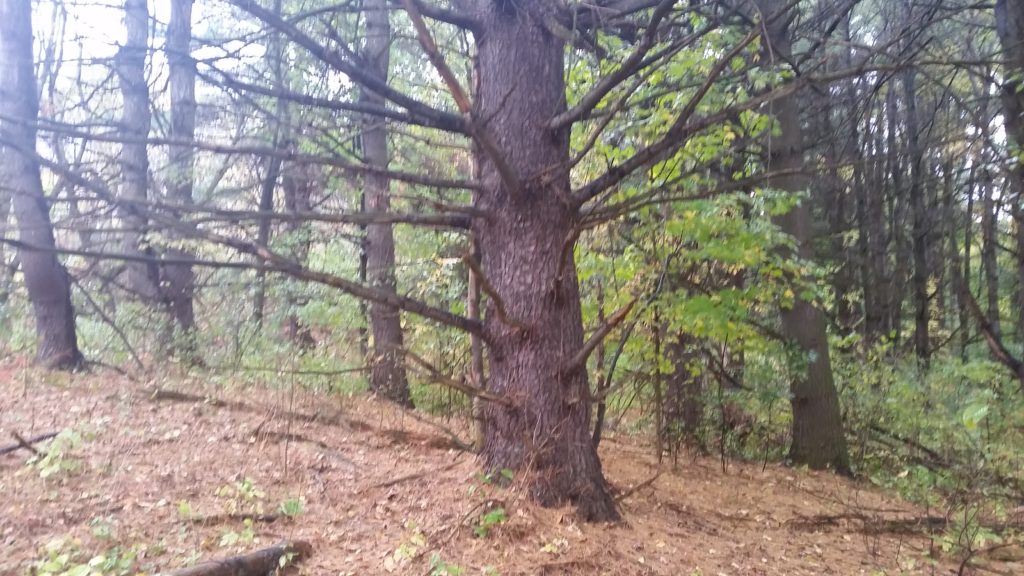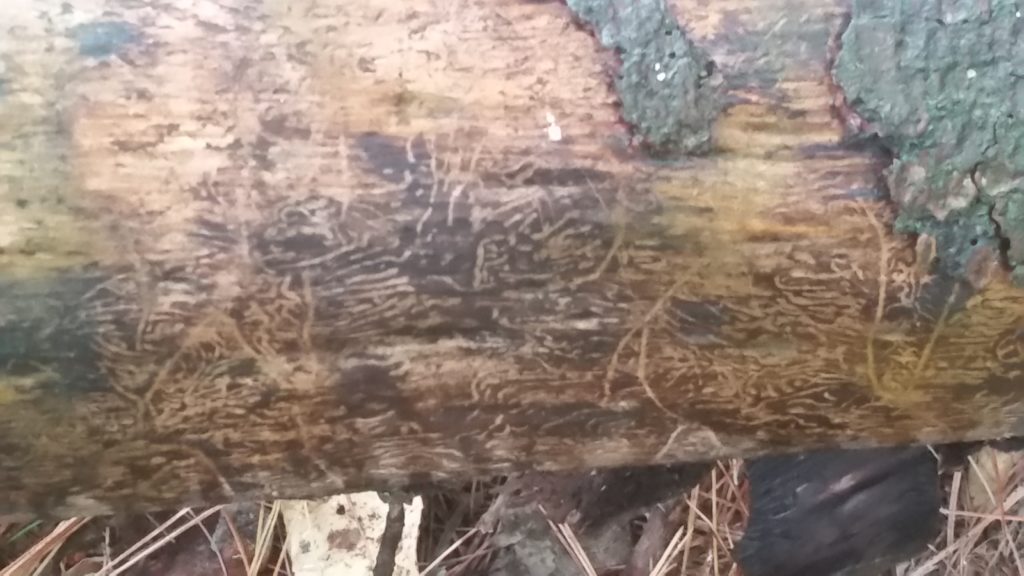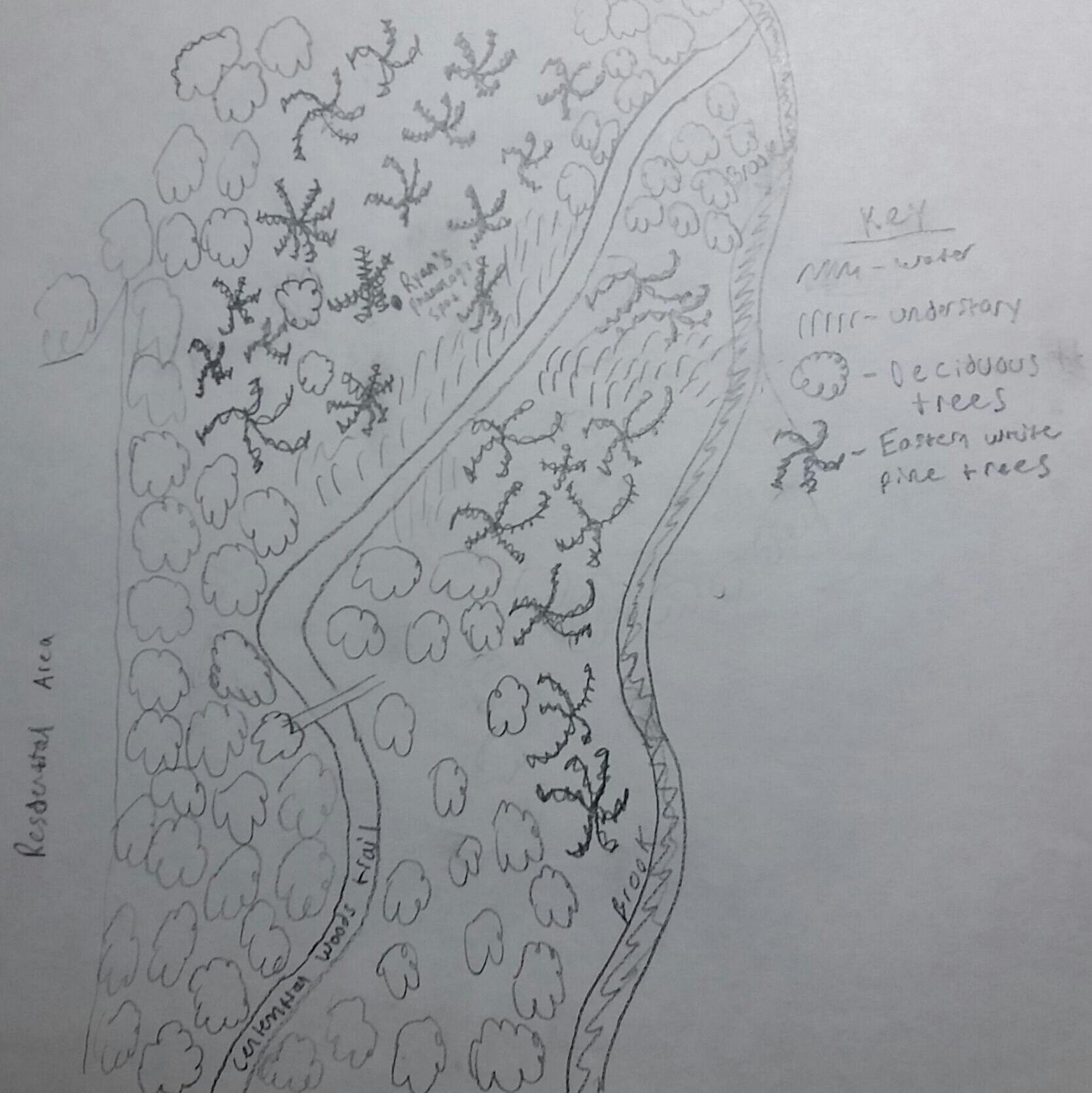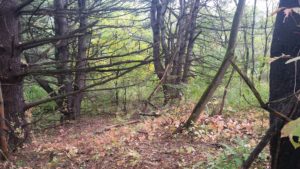The area smelled of worms and ozone, due to the rainfall earlier that morning. I noticed the sounds of silence as most of the birds have gone for the winter. The changes to vegetation have been very apparent since the last blog post. Now cold and mid-October, all the Ash, Black Cherry, and American Crabapple trees in the spot, except for the understory of Yellow Birch, Norway Maple, and Honeysuckle plants, have lost their yellow leaves to the ground. The Virginia creeper usually red and abundant has now lost its leaves, the stems are all that remain.

On the leaf littered ground, a fallen log shows signs of wildlife. A closer look reveals termite tracks from the summer have run their way all over the log. I could not find any evidence of food collection for hibernation, scat, or birds. It seems as though everything has gone dormant for the coming winter. I did however find a yellow band around an ash, showing evidence of human-sized wildlife. Then on my way out of the brush of understory that conceals my sit spot I noticed black spots on my pants. I bend down and realize that their are two nymph ticks are climbing their way towards the warmer regions of my body. Of course having acarophobia, I freaked out, pulled them out of my pants, and ran out of the spot as fast as I could.



